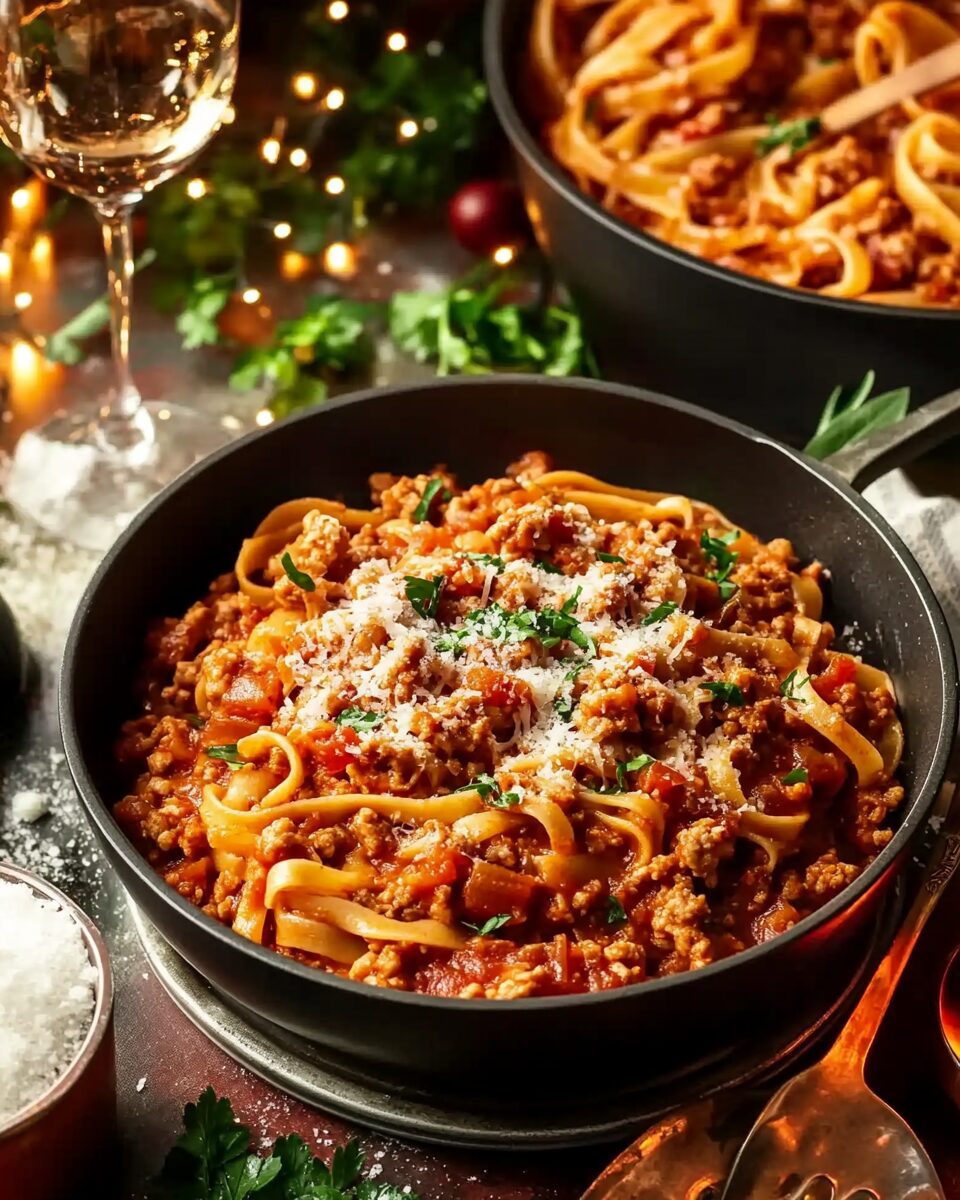A Modern Take on Traditional Bolognese
The original bolognese (ragù alla bolognese) hails from Bologna, Italy, and is typically made with ground beef, pork, pancetta, and milk, cooked low and slow for hours until velvety smooth. This chicken version pays homage to the original while speeding up the process and cutting back on richness, making it more approachable and everyday-friendly. The result is a sauce that still captures that deep, savory essence—but with fewer calories, less saturated fat, and a lighter mouthfeel. It’s a dish that satisfies cravings for something hearty without being overly heavy.
The Foundation of Flavor: Mirepoix and Garlic
The base of this Chicken Bolognese starts with a classic Italian-style mirepoix—finely diced carrots, celery, and onion sautéed slowly until caramelized and sweet. This step is crucial for building complexity and ensuring every bite of sauce has layers of flavor. Garlic is then added to provide a punch of aromatic depth, rounding out the earthy sweetness of the vegetables. These foundational elements create a savory canvas for the chicken to absorb, adding both texture and character to the sauce.
Lean Ground Chicken: A Light but Satisfying Protein
Ground chicken offers a lean alternative to traditional red meats while still providing the protein and substance needed for a satisfying sauce. The key to using ground chicken effectively is to brown it well and season generously. Letting it sear in the center of the pan before breaking it up ensures it develops a golden crust that locks in flavor. While it’s leaner than beef or pork, it soaks up the surrounding aromatics and tomato base beautifully, acting like a blank canvas for the bold ingredients layered throughout this dish.
San Marzano Tomatoes and Tomato Paste: Rich, Robust Base
San Marzano tomatoes are often considered the gold standard for Italian sauces. Grown in the volcanic soil near Mount Vesuvius, they are naturally sweet with low acidity and fewer seeds, making them ideal for rich, smooth sauces like Bolognese. In this recipe, whole peeled San Marzano tomatoes are crushed by hand or chopped, giving the sauce a rustic texture. Tomato paste adds concentration and depth, giving the final sauce a rich, umami-forward punch. These two ingredients form the backbone of the sauce’s complex tomato flavor.
Deglazing With White Wine: Adding Brightness and Balance
A splash of dry white wine adds a bright, acidic counterpoint to the richness of the sauce. It lifts the flavor profile and helps deglaze the pan, scraping up all the delicious browned bits from the bottom and incorporating them back into the sauce. Pinot Grigio or Sauvignon Blanc work well here, contributing citrusy notes that complement the tomato and herbs. As the alcohol cooks off, it leaves behind a subtle sharpness that keeps the sauce from becoming too one-note or overly heavy.
Herbs and Parmesan Rind: Building Depth
Fresh rosemary, thyme, and bay leaves infuse the sauce with a deep, woodsy aroma that evolves as the sauce simmers. These herbs work together to enhance the savory richness of the chicken and tomatoes while balancing the acidity with herbal complexity. An optional parmesan rind adds a subtle salty, nutty flavor that slowly melts into the sauce, enriching it further. This simple trick is beloved in Italian cooking for adding body and creaminess without additional fat.
Finishing Touches: Cream, Cheese, and Pasta Water
After the sauce has simmered and thickened, it’s finished with a splash of half & half and a generous helping of grated Parmesan or Pecorino Romano. This step brings the sauce together, adding creaminess and a velvety finish that coats the pasta perfectly. The use of pasta water—rich in starch—helps loosen and emulsify the sauce as it’s tossed with noodles, ensuring a silky, restaurant-style texture. This final touch makes the dish feel polished and cohesive without being overly rich or heavy.
Choosing the Right Pasta
This Chicken Bolognese pairs well with many types of pasta, but bucatini, pappardelle, and tagliatelle are especially well-suited due to their thickness and ability to catch the sauce. The wide or hollow shapes allow the creamy, meat-laden sauce to cling to every strand or ribbon, ensuring maximum flavor in every bite. While traditional spaghetti works too, opting for a more substantial noodle adds an extra level of comfort and sophistication to the meal.
Optional Garnishes and Serving Suggestions
To finish the dish, consider a sprinkle of freshly grated Parmesan, chopped parsley, or basil for color and contrast. A pinch of red pepper flakes adds a gentle heat, while a drizzle of good olive oil can enhance the sauce’s richness. Serve it with a side of crusty bread or a crisp green salad to complete the meal. For wine pairings, stick with dry whites or light reds like Pinot Noir or Chianti to complement the delicate richness of the chicken and tomato sauce.
Healthier Yet Indulgent
This version of Bolognese proves that you can enjoy a rich, creamy pasta dish without going overboard on fat or calories. Lean ground chicken replaces fattier meats, half & half stands in for heavy cream, and the sauce gets its depth from slow-cooked vegetables and herbs rather than excess butter or cheese. Each serving offers a solid amount of protein, fiber, and important nutrients like calcium and iron—making it a comforting yet health-conscious meal that doesn’t sacrifice flavor.
Make-Ahead and Meal Prep Friendly
One of the best things about Chicken Bolognese is how well it stores and reheats. The sauce can be made ahead and refrigerated for up to four days or frozen for up to three months. In fact, the flavors tend to deepen and improve over time, making it ideal for meal prepping or entertaining. Cooked pasta should be stored separately from the sauce to prevent it from getting soggy. Simply reheat and toss together before serving for a fresh, comforting meal any day of the week.
Conclusion
Chicken Bolognese is a wholesome, flavorful adaptation of the classic Italian meat sauce that delivers comfort and elegance with every bite. By replacing beef with ground chicken and incorporating a blend of vegetables, herbs, and creamy touches, this recipe offers a lighter, faster, and equally satisfying alternative. Whether you’re serving it over bucatini on a quiet weeknight or presenting it as a centerpiece for dinner guests, it’s a dish that brings people together and proves that healthy and hearty can go hand in hand. Once you try this chicken version, it’s bound to become a new staple in your pasta night rotation.






